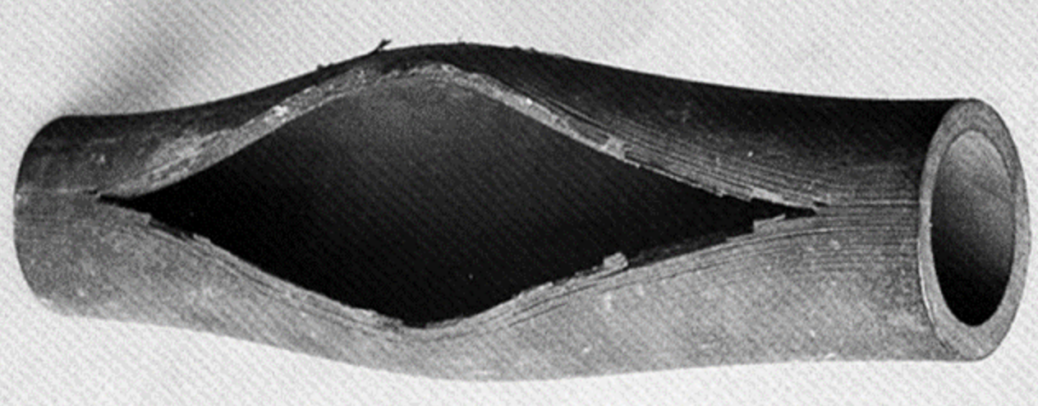Boiler tubes are conveniently used for applications where the aim is to vaporize water. In addition to that, boiler tubes can also be used for conducting fluids rather than water. Boiler tubes are mostly made of steel alloys, which are located in the boilers. The majority of the boiler tubes can be separated into two subgroups: the water tube boilers and fire tube boilers. In water tube boilers, water flows in the boiler tubes while the hot gases heat the pipes and vaporize the water. A furnace in the boiler is used as the primary heat source. In contrast with water tube boilers, fire tube boilers contain hot gases. The hot gases flow in the fire tube boilers and heat the surrounding water. For both of the tube types, the thermal conductivity of the tube material is vital for the efficiency of the process.
Since elevated temperatures are reached in the boilers, boiler tubes suffer from various types of damage mechanisms. The most common damage mechanisms that boiler tubes are susceptible can be exemplified as corrosion, embrittlement, graphitization, stress-corrosion cracking, thermal and corrosion fatigue, creep, and stress rupture. The root causes of these mechanisms are actually simple and can be stated as environmental and stress caused effects. The environment that boiler tubes are placed can contain aggressive chemical contents and elevated temperatures. Therefore, both chemicals and high temperatures can change the microstructure and surface conditions of the boiler tubes. The stress caused effects are mostly sourced from the flow type of the fluids. Moreover, residual internal stresses that are produced during welding or forming operations may cause stress formation in boiler tubes. In some cases, both environmental effects and stress caused effects contribute to the emergence of the boiler tubes’ damage.
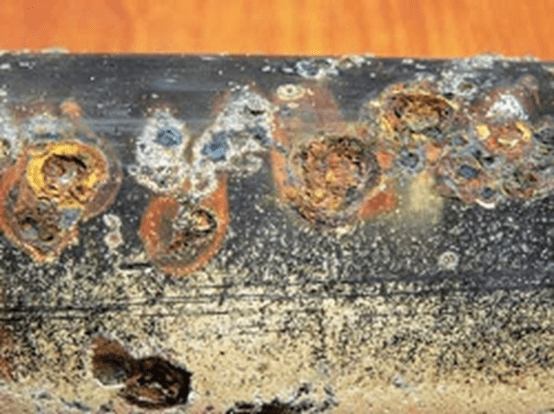
Corrosion damages are expected for most of the engineering applications. Hence, boiler tubes are affected by corrosion damages, too. The material of the boiler tubes is overly determinative in the manner of corrosion types. In the cases when a passive film is obtained on the surface of the tube, the possibility of the occurrence of pitting corrosion is high since non-homogenous degradation of the surface is convenient (e.g., 304,304L,316,316L,347 steel grades or aluminum and titanium alloys). Pitting corrosion is risky for boiling applications since the detection of the pits is extremely difficult. The pits can be deeper and may create leakages, which reduces the efficiency of the process. To prevent the pitting corrosion in the boiler tubes, the halide composition of the water must be diminished, and the oxygen concentration must also be reduced.
Erosion corrosion may also harm the inner faces of the boiler tubes. The damage of the inside of the tubes leads to the final failure. The erosion-corrosion is mostly caused by the solid particles’ abrasive effect that is contained by the fluids in the tubes. The solid particles strike to the inner walls of the tubes, where abrasion accelerates the corrosion. The particle removal from the surface is doubled by the effects of both corrosion and abrasion. At this point, the impact of the flow characteristic must be mentioned for further understanding of the erosion-corrosion. The stable flow of the fluid is maintained when the laminar characteristic of the flow is ensured. However, at the sharp corners of the boiler tubes, the flow of the fluid may change from laminar to turbulent (for flow characteristics, please examine ‘Reynold’s number’).
The turbulent flow generates a vortex on the inner walls’ surface, and this vortex increases the abrasion rate. A characteristic shape of the turbulent flow damage is called as ‘horseshoe shape,’ which can be observed at the inner walls of the tubes. The erosion-corrosion damages can be prevented by controlling the flow type of fluids. The design considerations must be based on the Moreover, the type of solid particles in the fluids are crucial. Hence, one must control the solid particles in the fluid (mostly water). One additional piece of information about material selection can be advantageous to inhibit erosion damages. Commonly used 316L steel grades can be replaced by 22Cr or 25 Cr duplex stainless steel plates, which perform better hardness against abrasive particles.
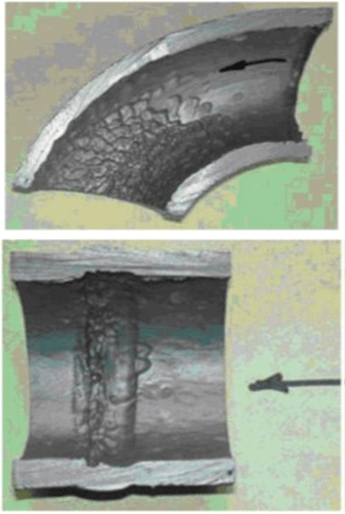
The inner stresses of the tube metal and the corrosive environment may promote the stress corrosion cracking in the boiler tubes. The stress corrosion cracking is a good example of the combination of environmental effects (chemical attack) and stress contribution. When the tensile residual stresses are combined with the corrosive environment, stress corrosion cracking occurs. Mostly, halide ions and dissolved oxygen ions accelerate stress corrosion possibility. In addition to that, improper welding of the boiler tubes and cold forming process may generate residual tensile stresses in the metal tube. The stress-relieving anneal of the tubes before the utilization reduces the degree of residual stresses. Moreover, the reduction of the dissolved oxygen concentration and halide ions decreases the corrosion rate.
One of the most crucial failure types of the boiler tubes can be referred as the creep and stress rupture when the temperature of the boiler tube excess the safety limits (for metals, 0.4 of the melting temperature). The tearing of the boiler tubes gives the ‘fish mouth’ shape, which is characteristic for inspecting the creep failures. The main reason of the creep failures in the pipelines (boiler tubes) can be explained as the combination of elevated temperatures and external stresses (sometimes residual stresses can also promote the creep damages). If any clogging takes place in the boiler tube, the flow rate of the fluids decreases, even the flow stops. Hence the temperature starts to increase. The reason for the clogging in the boiler tube can be corrosion products.
The failure types during these conditions are called ‘short time overheating’ and ‘long term overheating.’ The short-term overheating failures are often caused by stress rupture when the sudden failure of the tube is observed. The plastic deformation amount is extremely low during the short-term overheating. Hence, blunt lips of fish mouth shape are commonly observed (See Figure 3). If the heating process of the boiler tube takes time, this type of failure is called as ‘long-term overheating.’ Long-term overheating fails are mostly examined because of the creep mechanisms. In contrast with the short-term overheating, a high amount of plastic deformation is observed at the end of the long-term overheating processes. The thickness of the inner wall reduces within time as an effect of the creep. Hence, thin lips of fish mouth shape are conveniently observed (See Figure 4.)
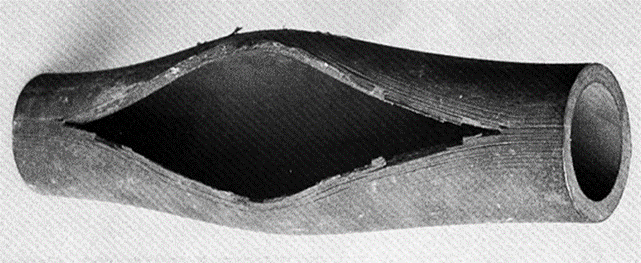
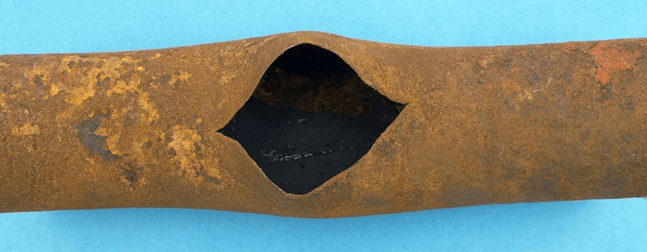
References
- Cause of Boiler Tube Failures – Chicago Tube & Iron. (2021). Retrieved December 2020, from https://www.chicagotube.com/products-2/boiler-tubing/cause-of-boiler-tube-failures/
- . Macmanis, S. (2021). Corrosion Control in Off-Line Steam Boilers – FMLink. Retrieved December 2020, from https://fmlink.com/articles/corrosion-control-in-off-line-steam-boilers/
- Finding the Root Cause of Boiler Tube Failures. (2021). Retrieved December 2020, from https://www.babcock.com/resources/learning-center/finding-the-root-cause-of-boiler-tube-failure

